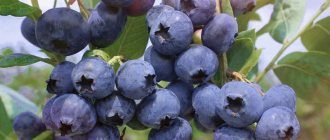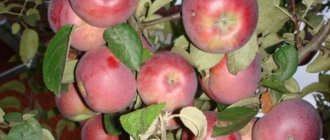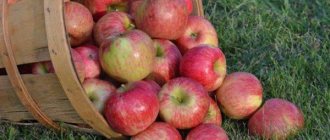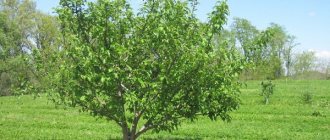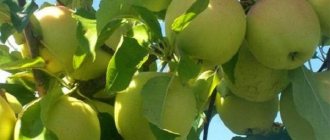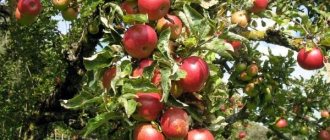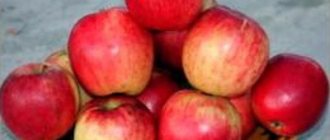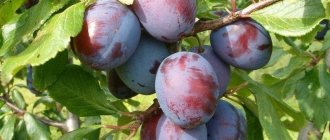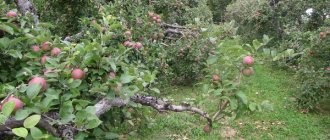Description of blueberry Elizabeth
The selective hybrid of Elizabeth blueberries came to our country from America. Gardeners fell in love with the shrub due to its strong aroma and pronounced pleasant taste. The bark of the plant has a reddish tint. This is a sign that the shrub is able to safely endure even the most severe frosts. The plant is also quite resistant to diseases and tolerates attacks by parasites well.
The berries are blue with a slight whitish tint due to plaque. They have a sweet and slightly sour taste.
The Elizabeth variety bush is erect. It reaches a height of no more than 1.6–1.8 m. Spreading branches intertwine with each other and form a lush green crown. The leaves are small, slightly elongated. They are characterized by a bright green color. The lower blade of the leaf has sparse hair.
Elizabeth blueberry blossoms are white with a slightly noticeable pink tint. The first berries are always expected in early August. Fruiting continues throughout the month. The first harvest from a young bush can be collected in the second year of its life. One bush can produce up to 5 kg of delicious berries.
Did you know? Blueberries can be used as a natural food coloring, so clothes with stains from the juice of this berry are very difficult to wash.
Description of the variety
The erect Elizabeth blueberry bush reaches a height of 1.6 to 1.8 m and is characterized by spreading branches that intertwine to form a dense crown. The shoots have a pronounced reddish tint, indicating the high frost resistance of the plant. The leaves of the variety are small, green, with a bluish coating. The flowers are white with a pinkish tint.
The berries of the Elizabeth variety are large, collected in a small loose cluster
The first berries ripen in early August, fruiting lasts for several weeks. On average, you can get up to 5 kg of harvest from one bush. The berries are round (slightly flattened at the poles), large, about 22 mm in diameter, dense, collected in a loose cluster. The skin of the fruit is a beautiful blue color with a bluish coating; there is a small scar on the surface. When harvesting, they are easily separated from the stalks. It is distinguished by gardeners as one of the best varieties in terms of taste.
Characteristics of Elizabeth blueberry
Despite the impressive number of advantages, Elizabeth blueberries have several disadvantages that may affect the choice of this variety for growing on the site.
Pros:
- relatively fast fruiting - the declared volume of berries (5–7 kg) is most often achieved in the 5th–6th year, but is possible in the 4th year with proper agricultural technology. In the first 2–3 years, the plant is not allowed to bear fruit, trying to direct all its efforts to forming a strong bush and growing wood;
- dessert taste, in which blueberry and grape notes are obvious;
- ripening and coloring are uniform and uniform, without intermediate shades;
- resistance to transportation;
- frost resistance of the variety (up to -32°C);
- resistance to sudden significant temperature changes;
- flower buds do not freeze out in winter, but suffer slightly from recurrent frosts;
- the variety is resistant to fungal diseases (late blight, root rot and stem cancer);
- the berries do not fall off when ripe.
The Elizabeth variety is popular among gardeners for its exceptional frost resistance and excellent taste.
Minuses:
- the volume of harvest obtained from a bush directly depends on the impact of spring return frosts on plants;
- short shelf life;
- In the cold early autumn, the fruits do not always have time to ripen.
Chemical composition
The Elizabeth variety is rich in all kinds of nutritional elements. Berries are very nutritious. 100 g contains:
| Substance | Quantity | % of normal |
| Squirrels | 1 g | 1,06% |
| Fats | 0.5 g | 0,72% |
| Carbohydrates | 6.6 g | 4,62% |
| Water | 88 g | 3,16% |
| Dietary fiber | 2.5 g | 12,5% |
Formation of bushes
In the first year after planting, Elizabeth blueberries do not need pruning. In the following year, branches damaged by rot, disease, and those broken by the wind are cut off. This type of pruning is called sanitary pruning. After a few years, shoots that thicken the bush are removed, due to which there is no good growth of the plant.
From about the sixth year of life, they begin to form a bush, giving it the desired shape. Remove all dead branches, including diseased and broken ones. This pruning is carried out in spring or winter, at the beginning of the season. Four fruiting branches and the same number of young shoots are left. The growth in the lower part of the bush is completely removed to eliminate its thickening and fungal diseases. That's all the basic information.
Useful properties and contraindications
- Blueberries have the following positive qualities:
- Increases the regenerative ability of body cells.
- Regular consumption of Elizabeth blueberries helps in the production of natural collagen and carotene. The latter allows the tan to lie beautifully on the skin, increases the elasticity of blood vessels, and saturates the cells of internal organs with oxygen.
- An indispensable product for those who are on a diet. All its beneficial substances are absorbed almost completely, which cannot be said about any plant in our latitudes.
- Helps with gastrointestinal diseases and food poisoning because it has disinfectant properties.
- Thanks to its antiseptic properties, it helps with throat diseases and inflammation of the upper respiratory tract.
- Mild diuretic and choleretic agent.
Important! Not only the fruits, but also the leaves of the plant can boast a huge number of beneficial properties.
A decoction of berries has good laxative properties. With its help you can normalize sugar and prevent diseases of the cardiovascular system.
Excessive use can lead to some rather unexpected results. At the same time, you will not be haunted by allergies.
- Overeating may cause:
- hypoxia of organs;
- increased blood clotting. Its use should be limited to those who suffer from heart disease;
- a high content of organic acids is a contraindication for use in gastrointestinal diseases.
Pregnant and breastfeeding women should consult their doctor before use
History of creation
At the beginning of the twentieth century, American E. White, the daughter of a cranberry farmer, began to think about creating varieties suitable for commercial sale. They had to combine, in addition to large fruit, also high aroma and taste qualities. She led blueberry research and literally “searched” all the eastern states of America in search of wild bushes with the most delicious, largest and aromatic berries. The researcher actively involved local residents in the search, who knew the forests and what grew where in them. They were promised to be paid generously for finding the bushes with the largest fruits.
But she could not find a plant with the characteristics she wanted. After 1910, Miss Lizzie continued her work with breeder Frederick Coville. Coville was not a farmer and Elizabeth was not a scientist. But they were the same in their tenacity and curiosity. And soon they achieved success. The first variety propagated by cuttings was Rubel. It is named after the first and last name of a local resident who found it in the wild on the instructions of E. White. And then Coville began hybridizing various varieties. And after cross-pollination (Katharine x Jersey) x Scammell, a new product was obtained, which was subsequently given the name “Elizabeth”, in honor of Miss White. Our heroine went on commercial sale in 1966.
Landing rules
The key to a good harvest is the planting material itself, as well as compliance with all planting technologies . When purchasing a seedling, it is important that its root system is closed and not too dry. You need to pay special attention to the above-ground part. Leaves and shoots should not be stained or dry. Such a seedling will most likely simply die.
Video: Proper planting of blueberries
First of all, it is worth preparing the soil for planting . Blueberries prefer acidified soil, but the pH should be in the range of 3.5–4.5. The ideal option would be the presence of land from a coniferous forest. Experienced gardeners simply make do by adding oxalic, citric acid or sawdust to the soil.
The landing technique is quite simple:
- Initially, the seedling, still in a separate container, is irrigated.
- Then it is planted in a pre-dug hole with a depth of no more than 40–50 cm and a diameter of 50–60 cm. After placing the plant there, the root system is straightened, it is covered with earth, deepening the root collar by no more than 5 cm.
- Watering is carried out with warm water with the addition of a small amount of potassium permanganate. One bush needs 5 liters of this solution.
- Finally, it is recommended to mulch with sawdust, bark or straw with a layer of 5 cm.
- Bushes should be located at a distance of 1–1.5 m from each other.
In order to independently obtain a new bush, seeds are collected from the fruit. They are dried and left to be stored until spring in a paper or fabric bag. 3 months before planting, the seeds are placed in a cold place, thus carrying out stratification. The most favorable planting time is at the end of summer. The seeds are buried in acidified soil to a depth of 1 cm.
Sprinkle peat and sand on top. Watering is carried out with a spray bottle. The plant is replanted at a time when the plant can boast 2-3 full leaves. The plant is transferred to its “permanent place of residence” after another two years. The bush begins to bear fruit in the 4th year.
Video: Growing blueberries from seeds
But the fastest and highest quality method of propagation is cuttings. In early spring or autumn, the most viable shoots are cut from the tops of an adult bush. Their length should be no more than 15 cm.
Important! Keeping the finished cutting in the cold (1-5ºC) for a month before planting increases the chances of rooting.
Planting and caring for Elizabeth blueberries
Compliance with the timing and technology of planting will be the key to a bountiful harvest in the future. In the wild, blueberries grow in marshy areas. The gardener’s task is to create conditions that are as close to natural as possible.
Recommended timing
Blueberries are usually planted in autumn and spring. Spring planting before the buds swell is considered preferable, because over the summer the seedlings have time to take root and get stronger.
Site selection and soil preparation
Blueberries absolutely do not tolerate sandy and clay soils. It bears fruit well on loose soils with moderate peat content, acidic (pH 3.5), and plenty of moisture. To plant blueberries, choose a sunny area so that the shadow from the trees does not fall on the bush.
Important! The blueberry variety Elizabeth categorically does not tolerate drafts. It is better not to choose hilly areas for planting.
Standard holes for planting strawberries in private households are prepared in advance. A substrate based on high-moor peat is placed at the bottom of the hole. The substrate is prepared in the proportion of 1 part peat to 3 parts river sand. The soil is fertilized with complex mineral fertilizers Master Valagro, Fertis NPK 12-8-16+ME, BIOGrand “AGRO-X”.
Warning! Organic fertilizers cannot be used when planting blueberries, as this leads to alkalization of the soil and death of the root system.
Landing algorithm
Healthy, 2-3-year-old seedlings with a closed root system in pots or bags are chosen as planting material. Before planting, the root system is soaked so as not to be injured when removed from the pot.
The standard blueberry planting scheme is as follows:
- pit size 50x50 cm;
- depth 40-50 cm;
- Row spacing is 2.5-3 m.
The blueberry planting algorithm is extremely simple:
- Drainage made of crushed stone, pebbles, and gravel is laid at the bottom of the pit.
- The earthen ball with the seedling is carefully lowered into the hole.
- The root collar is buried 5 cm, the roots are straightened.
- Cover with prepared substrate and compact.
- The tree trunk circle is mulched with a 5-centimeter layer of sawdust.
With proper care, the first harvest will appear 2-3 years after planting.
Subtleties of care and ripening time
Elizabeth blueberry bushes require sanitary pruning . It is carried out in the spring before the sap begins to flow or in the fall after the leaves fall. In the second year of life, broken, diseased and dried branches are pruned. In the third year, only skeletal branches are left. In place of the pruned branches, flower-bearing ones will form next year (they must be tied up).
Next year, branches of the second order will already grow. In the sixth year of life, the so-called formative pruning is carried out. During it, all branches are cut out, leaving only 4 fruiting and 4 young shoots. The bushes begin to bear fruit in the 3rd–4th year from the moment of planting. This variety is a late-ripening variety; the berries begin to ripen in August.
Mature plants tolerate the most severe frosts of our latitudes well . However, it’s still worth playing it safe once again and covering the bush with heat-saving materials. This is especially true for plants under 4 years old.
Find out how many years after planting and how often blueberries bear fruit.
Advantages and disadvantages of culture
Among the advantages of Elizabeth blueberries, gardeners note:
- high plant productivity - 5–7 kg per bush;
- rich taste of berries with blueberry-grape flavor;
- frost resistance up to – 32 °C;
- preservation of varietal properties during temperature changes;
- persistent built-in immunity that resists diseases characteristic of blueberries;
- strong connection of berries with the stalk;
- presentation of the fruit after transportation.
The culture is not without minor disadvantages that are worth paying attention to when growing. These include:
- long onset of fruiting - the sixth or seventh year from the moment of planting;
- partial death of flower buds during late frosts;
- uneven ripening of berries - 2-4 weeks;
- lack of time for the crop to ripen when early cold weather sets in.
Another drawback is the short shelf life of the crop, so it is recommended to preserve the berries immediately after picking, freeze them, or eat them fresh.
Watering and fertilizing
When the fruits ripen, Elizabeth requires careful watering (at least 2 times a week). Do not allow water to stagnate or soil to erode. On hot days, spraying is added, which is carried out in the evening to prevent burns.
Feeding is carried out according to the following rules:
| Shrub age | Period | Amount of feeding | Substance |
| First year of landing | On the 10–14th day after disembarkation | 10 l of solution | 1 tsp. urea, superphosphate and potassium sulfate. Add 5 kg of compost or peat. |
| Second year of landing | In April and June | 1 tbsp. l. solution | Complex mineral fertilizer |
| Third/fourth year of disembarkation | In April and June | 2–4 tbsp. l. solution | Complex mineral fertilizer. Add 10 kg of compost or peat. |
| Fifth year of landing | In April and June | 7–8 tbsp. l. solution | Complex mineral fertilizer. |
| Sixth year of landing | In April and June | 16th century l. solution | Complex mineral fertilizer. |
Planting blueberries
The key to obtaining a healthy and large harvest is compliance with agricultural practices and regular care of plantings. Garden blueberries need basic care, which should include irrigation, fertilization, formation of bushes, and preventive spraying against pests and diseases.
At your dacha, the bushes should be watered 2 times a week, using a bucket of water for each plant. Irrigation is best done in the evening, after sunset. From the moment of fruiting and the formation of new flower buds, more abundant watering is allowed. Depending on the amount of precipitation and the rate of liquid absorption by plant roots, the frequency of irrigation can be adjusted
It is important to avoid lack of water at the roots, as this can lead to their drying out and reduced yield.
Top dressing
They begin to fertilize the berry crop from the second year of life. In spring, shrubs are fed with mineral fertilizers twice - when the buds swell and 1.5 months after the first application. In autumn, phosphorus fertilizers are used, which plants need after harvesting.
Trimming
The formation of bushes involves removing old leaves, damaged and dry branches. It is recommended to prune the plantings in the spring, after the risk of return frosts has disappeared. You can also prune in the fall 2-3 weeks before the onset of cold weather. In the case of autumn formation of young seedlings, the use of covering material may be required.
Reproduction
In the spring, cuttings no longer than 15 cm are cut from harvested shoots. The lower cut is made oblique, and the upper cut is made horizontal. Then the lower base is dipped in a growth stimulator and deepened into the ground in prepared beds. The rooting procedure is recommended to be carried out in greenhouse conditions.
To grow shrubs at home, you need to select the right seedlings. It is necessary to purchase plants from specialized nurseries or professional breeders.
When purchasing, you need to carefully inspect the blueberries. If the root system is less than 50 cm, then this indicates a lack of quality care.
Stems and side shoots should be dark gray. The leaf blades should be green with a glossy surface.
To maintain the shape of the bush in normal condition, it is necessary to do sanitary pruning. To do this, long branches are shortened by 20 cm from their length. The cut is made smooth.
In late spring, phosphorus-potassium compounds and dry pine needle mulch are applied. In the first year after planting, the plant must be covered with dry leaves and the branches tied with twine.
Preparing for winter
Even taking into account the fact that blueberries are frost-resistant, the young plant should be prepared for wintering. For this it is recommended:
- mulch the soil around the bush with sawdust in a layer of 15 cm;
- a few weeks before frost, water thoroughly (6–7 buckets of water);
- tie the shoots into one bundle, tilt them towards the ground and cover them with heat-preserving material.
Planting a plant
Blueberry Duke
It is better to plant seedlings in the spring, so that they become stronger over the summer and can safely withstand winter frosts. But if necessary, planting in the fall is also possible.
When choosing a place in the garden, they give preference to a well-lit area. With a lack of light, the berries become smaller and do not gain any sweetness. Blueberries must be protected from the wind.
Blueberries love soil with an acidity of 3.5 to 4.5 pH. You can take peat soil, sandy loam substrate and rotted leaves with pine mulch. Another option is to buy acidic peat, add fallen leaves or pine needles and a little sand. The soil should be loose and moist. To acidify the soil, if possible, add sulfur.
blueberry bush
The depth of the planting hole is 60 cm. In a row between several bushes, a gap of 1.2-1.5 meters is left. The prepared soil is poured into the hole, no organic matter is added.
The plant is planted before the leaves bloom. Blueberries in a pot should have a closed root system. It is very fragile, and in order not to damage it, before planting, the pot is immersed in water for half an hour, then the seedling is carefully removed and the roots are straightened. Plant in a prepared hole, sprinkle with soil, water and mulch. For mulch, use sawdust (preferably from coniferous trees) or, in extreme cases, straw.
Note! In the fall, they plant according to the same rules, but at the same time they do pruning: weakened branches are removed, and the rest are shortened by half. Pruning is applied only to one-year-old seedlings.
Collection and storage of blueberries
The harvest is divided into several stages, because the berries do not ripen at the same time. They are collected manually and mechanically. It is recommended to pick fruits intended for transportation or sale by hand . If time is more valuable, then assembly and sorting is carried out by machine.
Did you know? During World War II, British pilots' diets included blueberry jam to improve vision during night missions.
After harvesting, the quality of the fruit gradually deteriorates. You can slow down this process by placing the berries in certain conditions. They can stay fresh in the refrigerator for up to 10 weeks.
Blueberries: choosing a variety (video)
When using the third method of propagating garden blueberries, the bush is divided so that the root system of each bush is at least 5-7 cm long. In this case, the divided parts of the bush should be immediately planted in the ground. If you propagate the plant in this way, the blueberry harvest will not take long to arrive.
For regular and good fruiting, garden blueberries need to be pruned.
If diseased branches appear on the bush, they must be removed and burned. In annual bushes, all flowers must be removed during the flowering period; this will have a beneficial effect on the further development of the plant. When pruning 2-4 year old bushes, the main task is to create a strong skeleton that will be able to withstand the weight of the crop. Therefore, weak branches and root shoots should be removed. For older plants, in addition to dry branches, shoots also need to be cut off. Do not allow branches to connect with neighboring plants - this will negatively affect the taste of the berries.
Pests and diseases
The fruits are very resistant to diseases and pests. Sometimes blueberries can be affected by:
- gray rot;
- anthracnose;
- fungus;
- white spotting.
Spraying with a fungicide (Fundazol, Topsin or Euparen) helps prevent the spread of any disease.
You will be interested in reading how to grow blueberries in the Krasnodar region.
The most dangerous pests are:
- fruit moth;
- leaf gall midge;
- kidney mite;
- black aphid;
- comma-shaped scale insect.
All parasites can be destroyed using chemicals (“Aktara”, “Sherpa” or “Decis”) or by removing the affected parts of the bush
From the description of the garden variety Elizabeth, it is clear that this is an unpretentious and generous plant. It has aromatic and delicious fruits. Doesn't require too much maintenance. When properly grown, a young bush begins to bear fruit after 2–3 years. Most often this happens in the 4th year.
Characteristics and description
The culture belongs to the tall, medium-late ripening varieties with excellent taste characteristics. In the southern regions of Russia, the first Elizabeth blueberries are enjoyed starting in the second ten days of July, in the middle zone and further north - in August.
Appearance of the bush and branching of the root system
In spring, green with a red tint, multiple shoots of blueberries begin to grow rapidly. The branches are of medium thickness - erect, spreading, intertwined. Brick-colored flowering shoots become woody and lighter with age. The bush reaches a height of 1.8 meters and a width of 1.5 m.
Small matte light green leaves acquire yellow and red tones closer to cold weather. The leaf blades are elongated, pointed at the ends, and slightly pubescent on the inside. The root of the plant is fibrous, up to 40 cm in size.
Flowering and fruiting
Elizabeth blueberries bloom in the spring and summer - late May–early June. The buds bloom with white flowers, shaped like a bell. The length of the petals is 1.5 cm.
The culture belongs to self-pollinating varieties. Despite this, other blueberry varieties are planted nearby and bloom at the same time. Cross pollination increases the quantity and quality of the crop.
The large blue berries with a white coating have an excellent dessert taste, distinguished by sweetness and notes of grapes, blueberries, and currants. Among late-ripening varieties, Elizabeth stands out for its exquisite taste and rich aroma.
The size of the berries in diameter is 1.6–2.5 cm. The pulp is liquid, the skin is not thick, but strong, retains the round, slightly flattened shape of the fruit when transported in its original state. Harvest ripening is uneven. Gardeners pick fresh berries, collected in loose clusters, throughout August. The separation from the stalk is light and dry.
An adult bush produces an average of 5 kg of berries annually. When planted in the southern regions and following agricultural technology, the yield increases to a maximum of 8 kg.
Low temperature resistance
According to the international classification of frost resistance, Elizabeth blueberries belong to USDA zone 4b. This means that the plant can withstand cold temperatures down to – 31.7 °C .
Some plants are not as afraid of frost as a sudden thaw or May frosts. The Elizabeth variety survives under these unfavorable conditions, although it loses part of its harvest due to return frosts.
Resistance to diseases and parasites
Elizabeth blueberries, due to their artificially built-in immunity, have high resistance to root rot, late blight, and stem cancer. The plant is susceptible to spotting and gray rot. Of the insects, the greatest damage to the crop is caused by scale insects and aphids.
See also
How to properly prune sea buckthorn and crown formation scheme for beginnersRead
Garden blueberry Elizabeth: features of planting, care and propagation
Blueberries have recently said goodbye to their status as an exotic plant. The plant has gained popularity among gardeners in regions with short, cool summers and harsh winters due to its exceptional frost resistance. The list of popular varieties includes the late-ripening variety Elizabeth.
History of selection
Varietal blueberries come from North America, where the berries were harvested wild until the 19th century. Only in 1906 did work begin on the cultivation of the plant. The founder was the botanist Frederick Vernon Coville. The Elizabeth variety is of hybrid origin, obtained by crossing the Katharine and Jersey varieties.
Description of the variety
The erect Elizabeth blueberry bush reaches a height of 1.6 to 1.8 m and is characterized by spreading branches that intertwine to form a dense crown. The shoots have a pronounced reddish tint, indicating the high frost resistance of the plant. The leaves of the variety are small, green, with a bluish coating. The flowers are white with a pinkish tint.
The berries of the Elizabeth variety are large, collected in a small loose cluster
The first berries ripen in early August, fruiting lasts for several weeks. On average, you can get up to 5 kg of harvest from one bush. The berries are round (slightly flattened at the poles), large, about 22 mm in diameter, dense, collected in a loose cluster. The skin of the fruit is a beautiful blue color with a bluish coating; there is a small scar on the surface. When harvesting, they are easily separated from the stalks. It is distinguished by gardeners as one of the best varieties in terms of taste.
Characteristics of Elizabeth blueberry
Despite the impressive number of advantages, Elizabeth blueberries have several disadvantages that may affect the choice of this variety for growing on the site.
- relatively fast fruiting - the declared volume of berries (5–7 kg) is most often achieved in the 5th–6th year, but is possible in the 4th year with proper agricultural technology. In the first 2–3 years, the plant is not allowed to bear fruit, trying to direct all its efforts to forming a strong bush and growing wood;
- dessert taste, in which blueberry and grape notes are obvious;
- ripening and coloring are uniform and uniform, without intermediate shades;
- resistance to transportation;
- frost resistance of the variety (up to -32°C);
- resistance to sudden significant temperature changes;
- flower buds do not freeze out in winter, but suffer slightly from recurrent frosts;
- the variety is resistant to fungal diseases (late blight, root rot and stem cancer);
- the berries do not fall off when ripe.
The Elizabeth variety is popular among gardeners for its exceptional frost resistance and excellent taste.
- the volume of harvest obtained from a bush directly depends on the impact of spring return frosts on plants;
- short shelf life;
- In the cold early autumn, the fruits do not always have time to ripen.
Landing Features
The key to a strong plant and a bountiful harvest, in addition to weather conditions, is the correct choice of planting material, a place for the future seedling, and the timing of its planting. Compliance with planting technologies is of no small importance.
Selection of planting material
Most often, planting material is purchased from specialized nurseries or garden centers. Blueberry seedlings with a closed root system are usually sold. It is important that the soil in which the roots are located is not too dry.
Usually blueberry seedlings are sold in containers with a closed root system
When purchasing, you need to pay attention to the above-ground part of the plant: the condition of the leaves, shoots, and bark. If the shoots or leaves dry out, have some spots or are simply lethargic, then you should refrain from purchasing. Most likely, such a plant will suffer for a long time and eventually die.
If you already have an Elizabeth blueberry bush on your property or someone you know, you can get the planting material yourself.
Seed propagation method
In this case, the seeds are extracted from well-ripened berries. To do this, the fruits are collected and kneaded, the resulting pulp must be washed well: it is placed in a container with water and mixed thoroughly. Only the seeds that have settled to the bottom are suitable for planting; they are removed and dried. After this, they can be folded into fabric or paper bags and stored until spring in a cool, dry place. 3 months before the intended planting, the bags are transferred to the refrigerator for stratification.
Blueberry seeds are extracted from well-ripened berries
Also, seeds can be planted in boxes immediately after receiving. August is considered the most favorable time for sowing. The soil for blueberries is acidified in advance and mixed with peat. The seeds are planted to a depth of about 1 cm, sprinkled with a mixture of sand and peat on top, and the box is covered with film. Watering is carried out using a spray bottle.
It is recommended to transplant the emerging sprouts into separate containers after the appearance of 2–3 true leaves, and planting in open ground is carried out in the 2nd year after planting.
The main negative feature of this method of reproduction is the speed of fruiting. The first harvest from plants grown from seeds can only be obtained after 7–8 years.
Vegetative methods of propagation
Blueberries obtained vegetatively usually begin to bear fruit in the 4th year.
- Reproduction by cuttings: this method is considered the most promising. In autumn or early spring, the middle or apical parts of last year's strongest mature shoots with a diameter of 0.5–1.2 cm are selected for cuttings. The length of the cutting is from 8 to 15 cm. Shoots on which there are a large number of flower buds are not suitable for propagation. Keeping the cuttings for a month at a temperature of 1–5°C significantly increases the chances of rooting. Planting is carried out in a light substrate mixed with peat. The seedlings are transplanted to a permanent place in open ground in the second year.
The apical parts of ripened blueberry shoots become cuttings for propagation.
Blueberry planting technique
Garden blueberries can be planted in spring or autumn. In addition, you can focus on the condition of the seedling:
- thin and weak plants are planted in spring;
- stronger specimens will withstand planting in the autumn.
It is preferable to plant bushes in the spring before the buds swell. Over the summer, young plants have time to grow stronger and take root well.
To plant garden blueberries, choose sunny places with protection from the wind. It should be remembered that the plant does not like heavy and swampy soils, so it is planted on hills so that the shade from trees and larger shrubs does not cover the blueberries. The soil for blueberries should be acidic, moisture- and breathable. To do this, planting holes are filled with a substrate to which peat, soil from coniferous plants or river sand are added in a ratio of 1:3. Optimal acidity pH 3.5–4.5. It is also necessary to add complex mineral fertilizers to the soil. Organic fertilizers are not added, as the soil becomes alkalized.
Standard pits for planting are prepared in advance:
- depth - 0.6 m;
- diameter - 0.1 m;
- landing step - at least 2 m.
- A drainage layer of pebbles, crushed stone, crushed brick or gravel is placed at the bottom of the pit.
- Before planting, containers with seedlings are placed in water or spilled well so that the earthen ball can be removed without damaging the delicate root system.
- Then the lump is carefully lowered into the hole, after which it is covered with the prepared substrate, compacting it.
- The tree trunk circle is mulched with sawdust, tree bark, wood chips, and straw. A layer of mulch is made at least 5 cm to prevent weathering of the soil, overgrowing of the tree trunk with weeds, and loss of moisture.
After planting, the tree trunk circle must be covered with mulch material to avoid moisture loss
Video: soil preparation and planting blueberries
Features of care
The health of blueberries and the quantity and quality of ripening berries depend on care. It is necessary to fertilize and water the bushes in a timely manner to ensure the normal functioning of the plant.
Watering
Elizabeth blueberries require plenty of watering to ripen. Hydration is especially important in hot and dry weather. Irrigate at least 2 times a week, avoiding stagnation of moisture and cracking of the soil. One bush requires two buckets of water: the first is poured out in the early morning, the second in the evening, after 19 hours.
